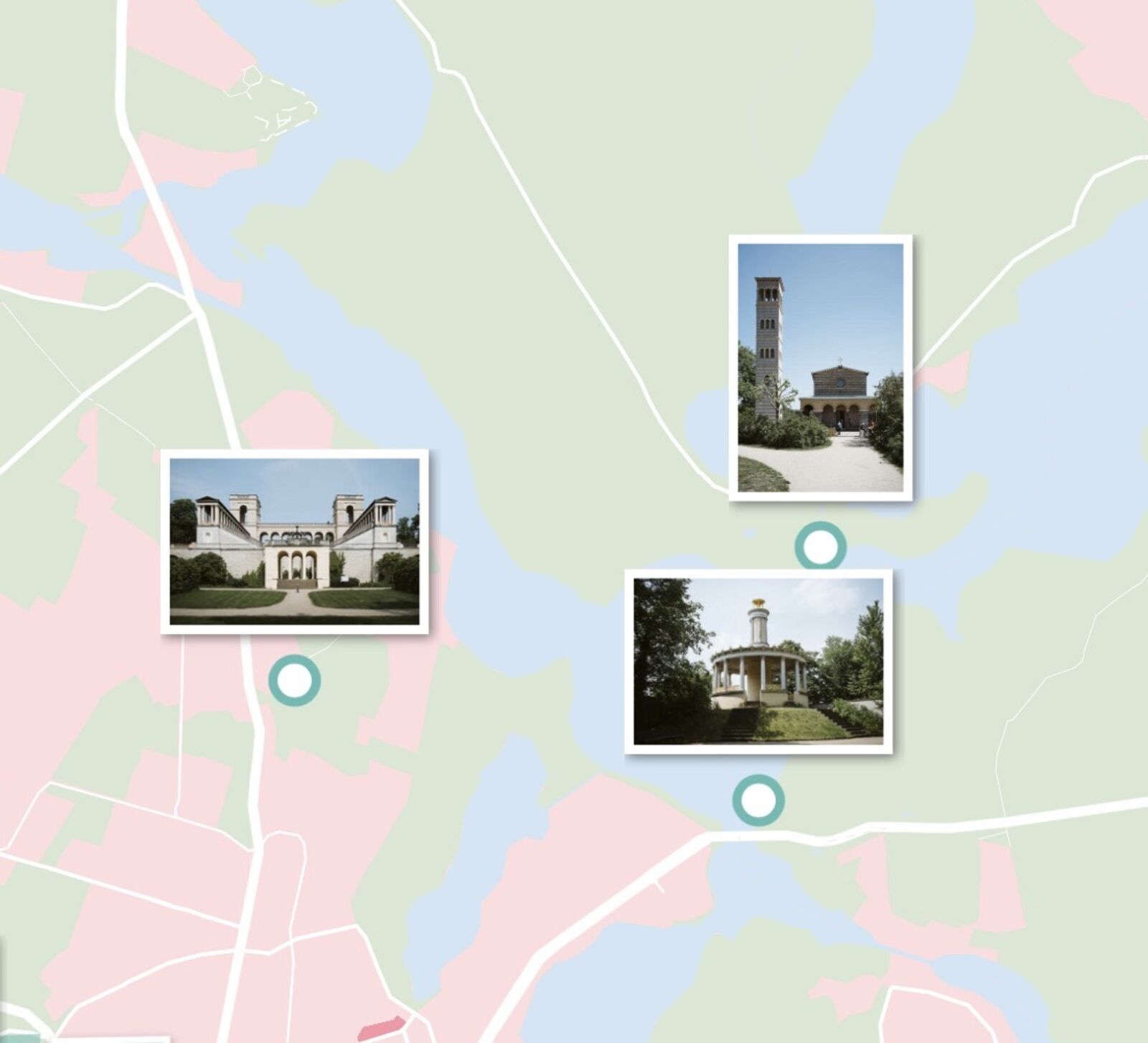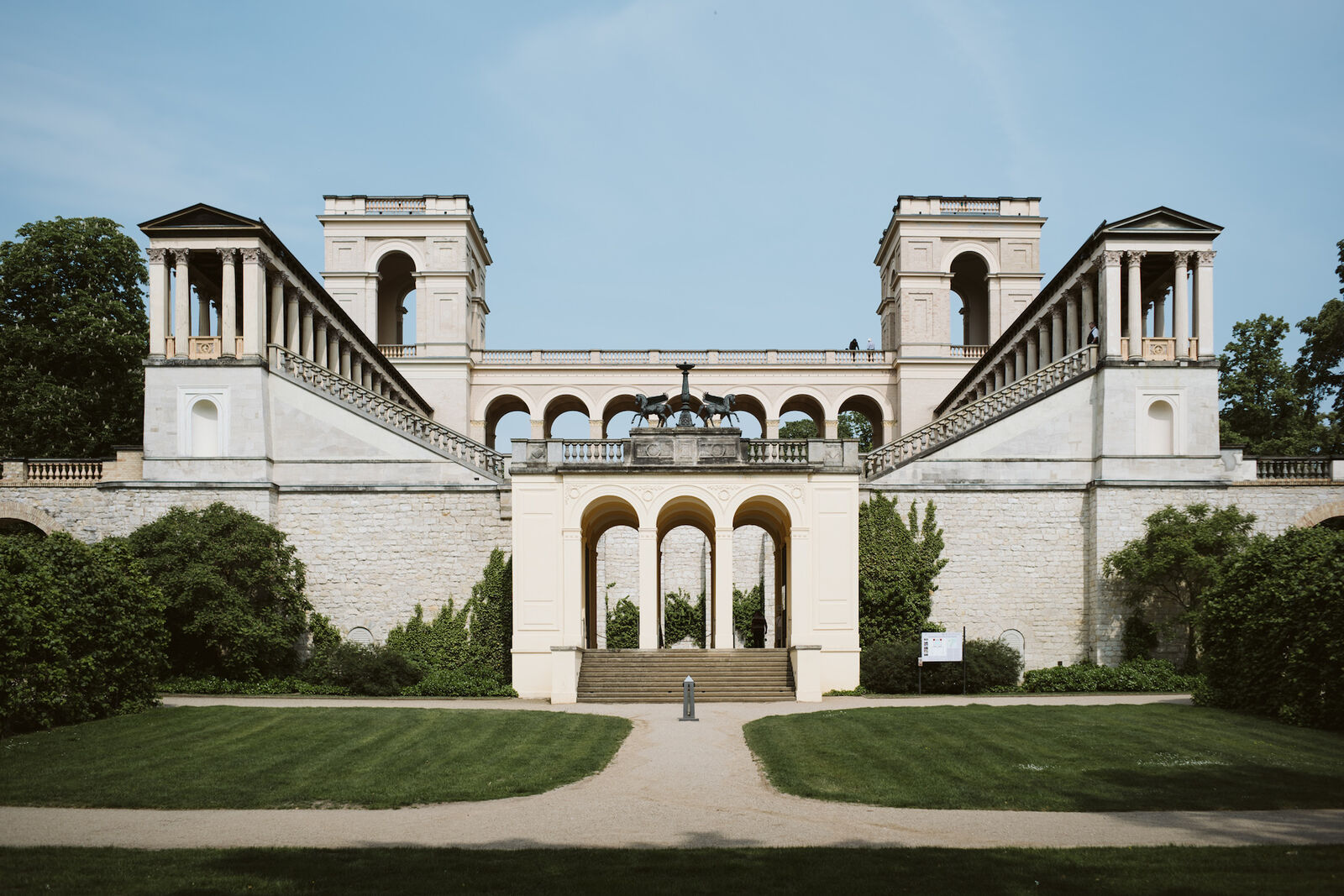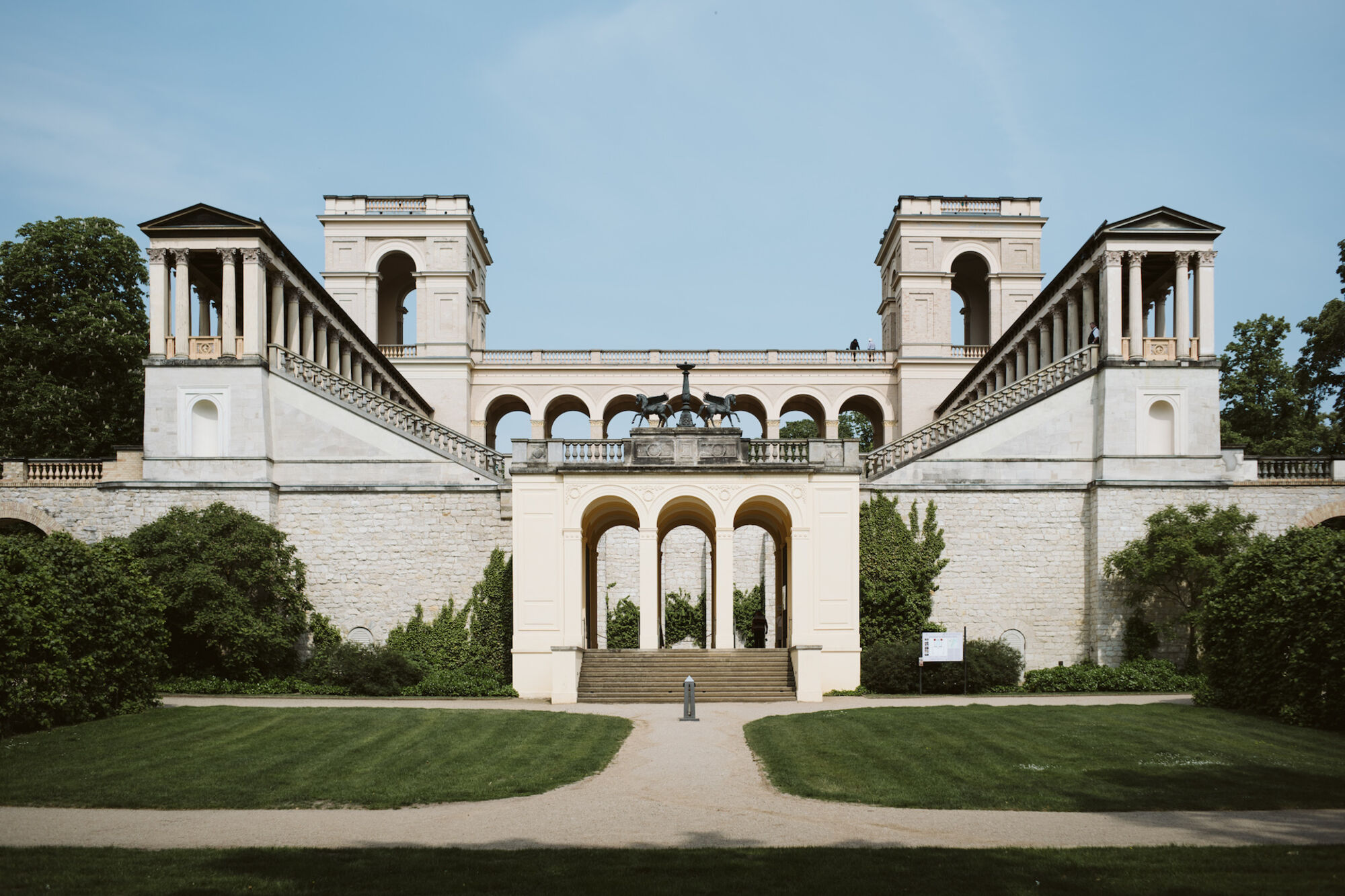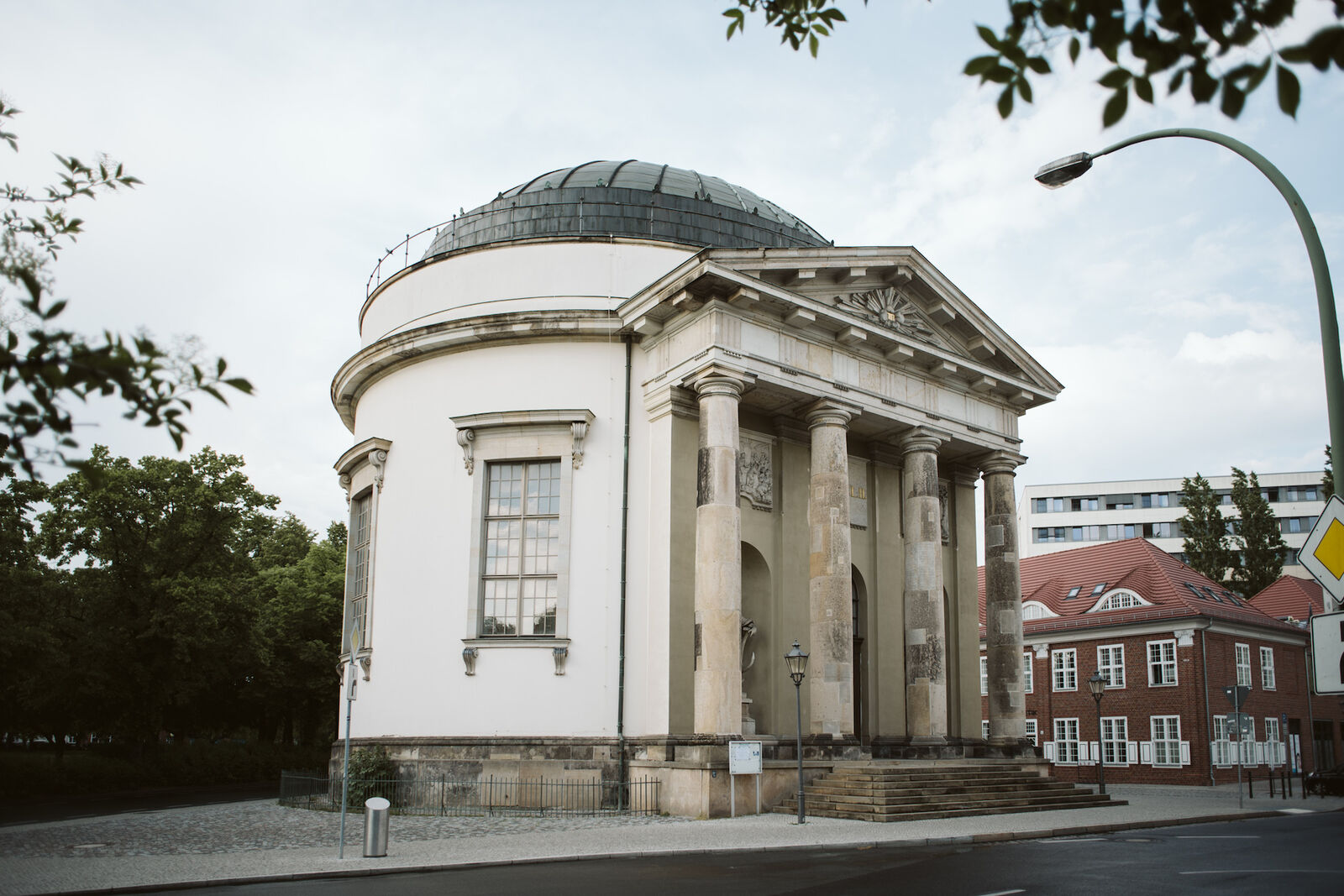
Belvedere Pfingstberg / Villa Farnesina
Another palace with a view sits high above Potsdam on the hill known as the Pfingstberg. Nowhere else is the view of the Prussian royal city and the countryside along the River Havel more beautiful or far-reaching.

Henry Balaszeskul
Belvedere Pfingstberg, Potsdam
Frederick William's dream palace
The architecture with its pale sandstone is also dazzling in its dimensions: two 25-metre towers rise above the treetops. An open loggia with arcades in the middle, its colonnades on both sides provide access to the towers and a large pool in the centre, which mirrors the blue of the sky.
All this merges to form a splendid palace that serves only one purpose: to delight the eye and provide a view over the rich variety of the landscape around the lakes formed by the Havel. Frederick Wilhelm the Fourth wanted to crown the Pfingstberg with an architectural highlight.
Its form is reminiscent of famous Roman villas of the Renaissance: it echoes notable features like the loggias in the Villa Farnesina in the Trastevere district and the double towers of the Villa Medici. Frederick William knew both buildings from his visits to Rome. In his travel sketches he also captured the casino building in the garden of the Palazzo Farnese, north of Rome. In the Belvedere on the Pfingstberg, the Prussian king created his own Italian dream palace.
Schinkel's first work
Frederick William had already drawn his first sketches shortly after he ascended the throne in 1840. The architects who carried them out, Ludwig Persius, Ludwig Ferdinand Hesse and Friedrich August Stüler had little scope for their own ideas. A sketch from 1856 shows the original plans for a superb complex on the slope, with stairs, watercourses and pools. All that was completed was the Belvedere, the crowning touch. As with many projects by the romantic on the throne, construction dragged on for more than fifteen years. Work first began in 1847. Frederick William didn't live to see the completed Belvedere in 1863. He died two years before it was finished.
Italian motifs also served as models for furnishing the few interiors: the walls of the Roman chamber in the western tower glow in Pompeiian red. They're painted with grotesques. Tiled bands of mosaics in red, blue and gold, ceiling paintings and a marble floor lend the Moorish chamber in the opposite tower an exotic atmosphere.
Below the Belvedere, after a few steps through a romantic pergola, it's well worth visiting the small neoclassical temple dedicated to the Roman goddess of fruitful abundance, the Pomona Temple. It had already been commissioned in around 1800 by the property's previous owner, as a tea pavilion, based on designs by Karl Friedrich Schinkel. The sun-yellow cube-shaped building with an open columned entrance facing the valley and a roof terrace is considered the famous Prussian architect's first work. And with Schinkel's architecture, neoclassicism arrived in Prussia.
The Belvedere Pfingstberg is one of the stops on the audio tour Italy in Potsdam, which was developed as a city tour for the Barberini App on the occasion of the exhibition Baroque Pathways (13.7.-6.10.2019). The tour, narrated by TV host Günther Jauch, invites visitors to discover 30 buildings and works of art around the Museum Barberini that were created in the 18th and 19th centuries based on Italian models. Download the Barberini App and let yourself be surprised by the many Italian facets of this city.






